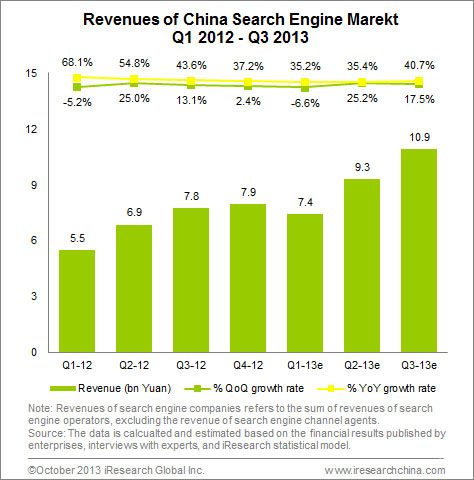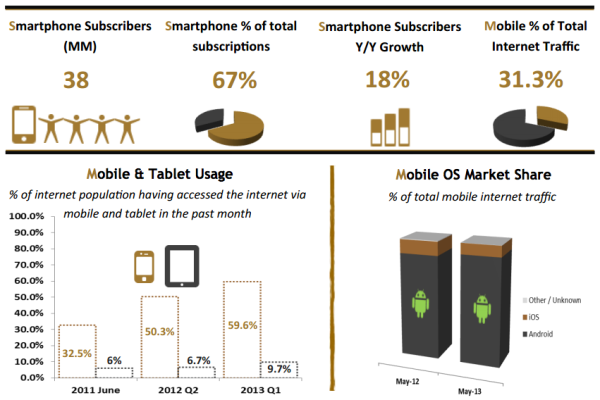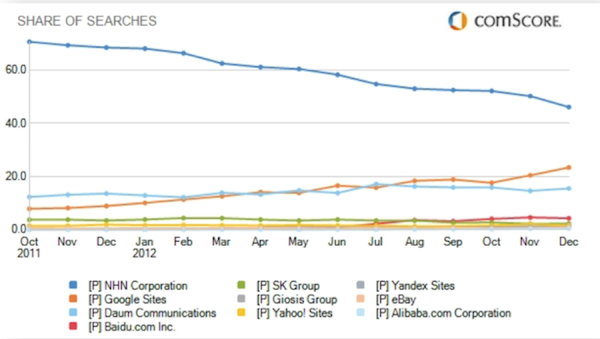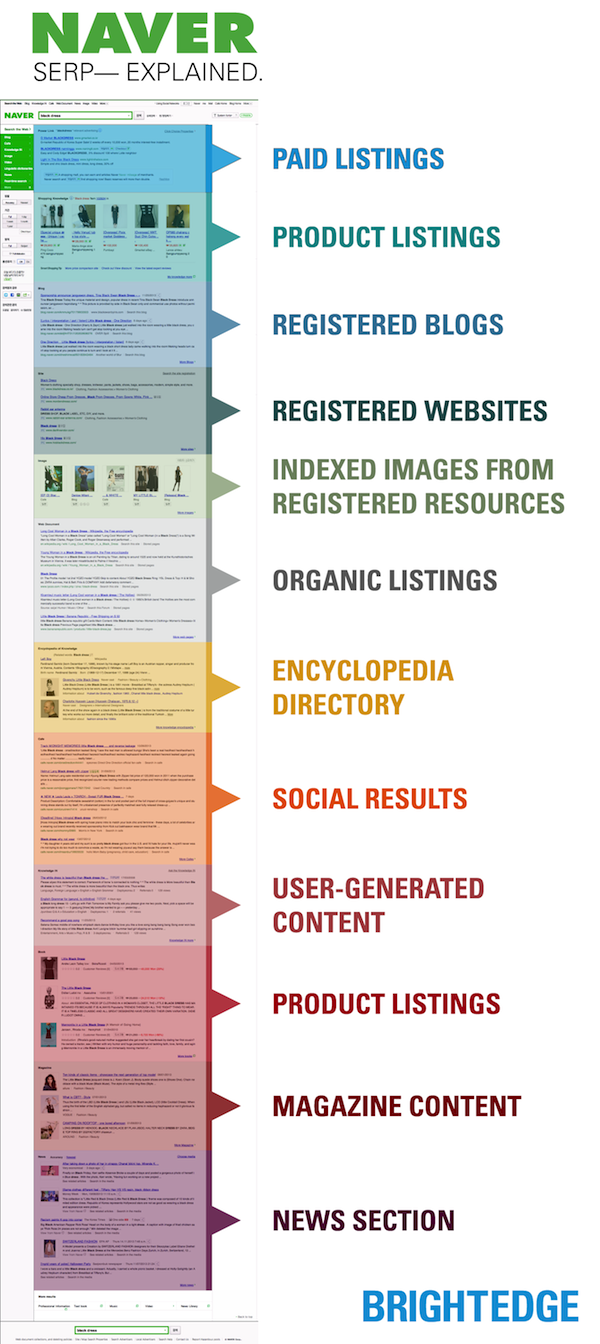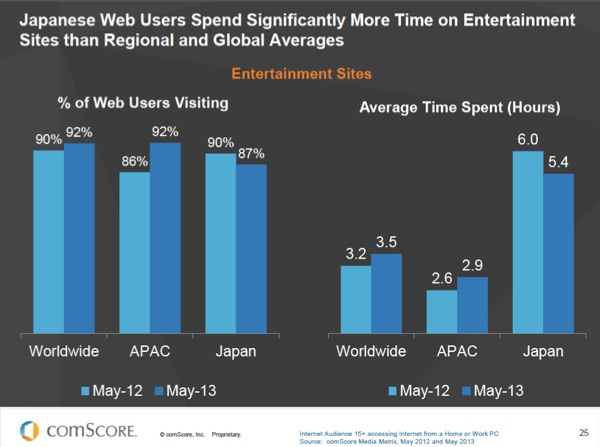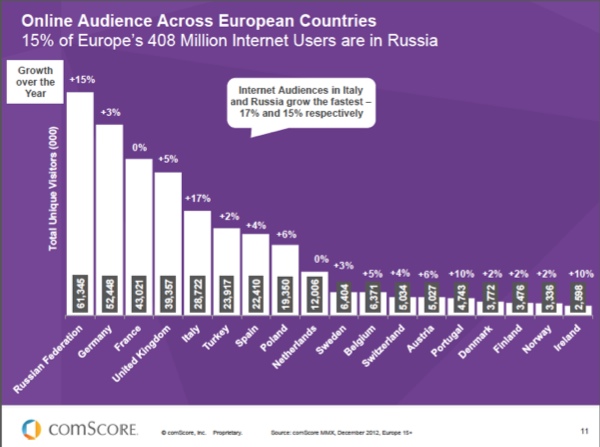The Global SEO & Content Marketing Landscape
Search unifies people across the globe, and search engines are the catalyst for making that connection. For global brands, optimizing for different search engines and different cultures increases awareness, visibility, traffic and conversions. Global SEO and content marketing are more important than ever! The 2013 year saw search engine heroes and underdogs fight for their […]
Search unifies people across the globe, and search engines are the catalyst for making that connection. For global brands, optimizing for different search engines and different cultures increases awareness, visibility, traffic and conversions. Global SEO and content marketing are more important than ever!
The 2013 year saw search engine heroes and underdogs fight for their share of market across the globe. Here in the U.S., Google continued to dominate the U.S. search market, and Yahoo saw a steady decline while Bing consistently grew.
Globally, Google reigned in terms of overall reach, but indigenous search engines worldwide in countries like Russia, China and South Korea claimed their stake as leading engines in their homeland and beyond.
The climate of global search and online usage is hot. Countries all over the world are online more and more each year, buying, selling, and engaging in social activities on both desktop and mobile. Marketers engaging in global SEO and digital marketing need to move fast to snatch up the opportunity and operate in a global market that’s getting larger everyday, making the world a smaller place to do business.
Google, Yahoo And Bing U.S. Growth In 2013
Google set foot into 2013 with 67 percent U.S. market share — the highest share claimed to date, with November 2012 being the first time it had done so. The most recent data from comScore (November) showed Google close to finishing out the year a little below where it started in January, at 66.7 percent.
Bing started off the year with 16.5 percent U.S. search market share and proved that slow and steady wins the race, with stable growth month after month, holding steady in November 2013 at 18.1 percent.
For Yahoo, 2013 would bring a struggle to maintain share, with 12.1 percent being the highest it claimed all year. By October, its share had dropped to 11.1 percent, and most recent data from comScore in November showed search market share at 11.2 percent.
The comScore data this year continued to highlight the battle between Bing and Yahoo for search market share. Reports showed the percentage that Bing grew in June was the exact amount of share Yahoo lost.
Marissa Mayer saw the problem, stating that the Microsoft-Yahoo search deal wasn’t working as it should: “One of the points of the alliance is that we collectively want to grow share rather than just trading share with each other.”
Earlier this year, research that was not officially released by comScore (but surfaced nonetheless) showed Google’s place in the world in terms of popularity. What we found was that, by December 2012, Google did indeed dominate search globally overall in number of searches at 114.7 billion searches, or around 65 percent of share.
But there’s more to the story than just Google in today’s global market …
APAC, Online Usage And Top Engines
The Asian-Pacific (APAC) online market is growing fast. In fact, comScore reported in October that APAC is already the largest advertising market outside North America, and Internet ad expenditure is set to overtake that of newspapers by the end of 2014. By 2015, said comScore, online advertising will account for 21.9 percent of all ad spend.
Additionally, emerging countries like China have some very interesting developments occurring in the world of search.
China, Baidu And Emerging Trends
China dominates the world’s population, and online usage has penetrated the masses. According to comScore, China is the No. 1 online population in APAC and the world.
More from comScore:
- China’s online population now exceeds 347 million, with an extended online universe in excess of 460 million.
- Chinese users spend an average 150 minutes a month on retail sites.
- Top web properties in niche sectors such as real estate, automotive and beauty/fashion style have active user in the multi-millions.
Social media reach in China is above average, but usage is still low:
As for top social networks, as of August 2013, comScore reported the top five social networks in China were:
- QQ.com Qzone
- QQ.com microblogging
- SINA microblogging
- Pengyou.com
- Renren.com
Because China has such strict censorship regulations, it makes sense to have indigenous search engines. Third-quarter data from iResearch Global showed growing revenues for the Chinese search engines, with year-over-year growth of nearly 41 percent:
In Q1 2013, iResearch showcased search market revenue share in China over three years, starting in 2010. Baidu was the clear winner and steadily grew to about 81 percent, while Google China shrunk to about 14 percent.
When it comes to search share, June reports showed Baidu at about 66 percent , according to its data, and Google plummeted down to 3 percent.
This year, Chinese search engines were in a strategic battle for rank and saw mergers as one way to gain ground. In July, reports were rampant that the second largest engine, Qihoo, would acquire the third largest, Sogou. But in September, other reports came out that Sogou would merge with the fourth-largest engine, Sosa.
And quietly in the background, China’s e-commerce giant, Alibaba, released Aliyun Search. It remains to be seen how Aliyun will impact the landscape in China, but comScore reported in October’s China Digital Future in Focus 2013 report that Alibaba users spent 137 minutes per visitor on average, at least four times more than the nearest competitor.
South Korea, Mobile And Naver
According to research published by Webcertain, South Korea mobile phone usage is outpacing other Asian-Pacific countries and even the world, with smartphone data usage in South Korea more than three times that of the global average. In Q1 2013, nearly 60 percent accessed Internet via a smartphone, according to Webcertain’s Global Mobile Report 2013.
South Korea’s leader in search market share is Naver, and being successful online in the Korean language market means being on Naver. While comScore data shows Naver in a decline from 2011, with Google slightly gaining ground, it’s far from a close call.
Marketing In Naver In 2014
Naver has a unique model. Like Yahoo sites, it’s a portal that drives engagement to more Naver sites — but it’s also an engine and has multifaceted search results (similar to Google’ Universal Search results, but denser in format). For global brands, that means being in as many places as possible to gain visibility for your brand.
In order to compete on Naver, you must first sign up with the search engine and be approved to participate. Here are five tips to get you started marketing in Naver:
- Korean language sites win.
- Participate in user-generated content in Naver’s Knowledge iN.
- Host a blog and keep it active.
- Be social in Naver’s Café platform.
- Use basic on-page SEO tactics in all your efforts.
Japan, Yahoo, Social Media And Mobile
Japan is the world’s fourth largest Internet population. In Japan, Yahoo sites are a top Web destination, mobile usage is rampant, Twitter and Facebook dominate the social scene, and entertainment sites are where Japanese spend most of their time online.
According to comScore data in May, Yahoo topped site usage with nearly 65,000 unique visitors — not too much higher than Google at about 64,000:
Japanese spend more time in entertainment sites than the APAC and worldwide averages, with May 2013 data showing an average of about 5 hours spent on these types of sites, versus the world’s 3.5-hour average.
comScore reports showed Japan was home to a 102 million strong mobile audience and a fast growing smartphone segment with a penetration rate at more than 34 percent.
The European Digital Landscape
Comprised of many countries, all with varying online adoption, Europe and its online population is still growing, offering much opportunity. According to data released by comScore in March of this year, Europe accounted for 27 percent of the global Internet audience.
Here’s the European digital snapshot (comScore, March 2013):
- Italy’s Internet audience was growing the fastest, up 17 percent compared to the year previous.
- Turkey has the biggest proportion of young Web users while Germany skews older.
- In December 2012, 75 percent of mobile devices in EU5 countries (Italy, France, Germany, Spain, and the UK) were smartphones, and more than 23 million people had them.
- Europeans spend 6.7 hours per month on social networking sites or blogs.
- Eight out of 10 European Web users visit news and information sites.
- Around 14 percent of smartphone users purchased a good or service via their device, and about 37 percent smartphone shoppers purchased clothing or accessories.
In Europe, Google is the leader, capturing around 86 percent of share — much higher than in the U.S. — with the next favorite being Yandex.
When it came to online usage, comScore data showed Turkey leading the way with most searches, but the UK was No. 1 in hours spent online.
And Europeans searched on other sites, too, like eBay, Facebook and Amazon.
Russia, Online Usage And Yandex
Bordering Asian and other European countries, Russia claims the majority share of Internet users in Europe, according to comScore. It’s no surprise, then, that the country’s homegrown search engine, Yandex, is the fourth-largest search engine in the world.
Yandex had highs and lows this year, from the release of “Islands” (the next level of rich snippets technology) to the death of co-founder Ilya Segalovich.
Early in the year, reports came out that Yandex had surpassed Bing in number of monthly search queries in November and December of 2012. With Yandex processing 4.84 billion queries, and Microsoft processing 4.48 billion in December, that meant it held a 2.8 percent global share to Microsoft’s 2.5 percent.
More recently, reports by Bloomberg show Yandex search share in Russia at 62 percent, with Google’s share around 26 percent and Mail.ru – the other major search product in Russia – at about 9 percent.
Yandex is working hard to expand into other countries like the Ukraine and Turkey, offering other languages outside of Russian. In fact, reports from CNN said Yandex’s strategy is to be the No. 2 search engine next to Google in the markets it breaks into.
And revenue data shows Yandex is growing steadily, with Q3 revenue up 40 percent from 2012 at the equivalent of approximately $320 million.
5 Tips For Global Optimization In 2014
Global optimization is crucial for international brands. While each search engine and culture will have its own nuances, here are some tips for global SEO in 2014:
1. Understand Local Users
In my column about global SEO and localization in September, we looked at critical questions to answer for each geography and language. Here’s an excerpt of that article:
- Keyword research: What topics matter to my audience? How are these interests expressed in the form of phrases/keywords? How do these translate into search demand? Can you zoom in on head and tail terms (and groups)?
- Competitive analysis: Who is your competition for each combination of language, geography and search engine? What keywords is your competition focusing on? Do these matter to your business and your target audience? (If yes, add these to your list of target keywords.) From which sites is your competition getting their backlinks? Are these sites relevant to your business? Does it make sense for the users of these sites to see a link to your content?
- Content plan: Can your target keywords be incorporated into existing content that you intend to reuse? Be sure not to force these keywords into the content. If not, plan on creating new content. How does the audience for each combination consume information? What formats do they prefer (example: text vs. visual)? Do you have a plan to create content that maps with these formats?
2. Create Local-Focused Content
If you’re going to connect with your audience in the areas you serve, have content that resonates with the culture. Something to consider when marketing across cultures:
- What values matter to that culture? What may be taboo?
- If working with original content native to your country, would the sentiment translate well into another language?
- Comply with language requirements of other search engines; for example, Naver requires you have a site with native language in order to succeed.
- Make sure you know what type of content wins on any given search engine — it’s not the same worldwide.
3. Understand SERP Layouts
With the majority of marketers across the world working within the Google search engine, it’s important to understand the changes we saw in 2013 in the U.S. search engine results, and how that may impact your SEO in 2014.
And keep your eye on the following:
- Optimizing for the local search results carousel.
- Make sure you understand the other SERPs from Naver, Yandex and Baidu, to name a few.
- Know how to optimize for Universal search results and mobile search results.
4. Remember Local Regulations
Countries like Russia, China and more all have special Internet regulations. If you’re doing business in countries abroad, know what practices and content are acceptable, and play by the rules.
Here are a couple topics to get familiar with:
5. Source the Right Talent & Technology
Marketing locally across the globe means having people on the ground in the places you want to reach. Simply copying your current efforts into another market may forge a disconnection between the brand and its audience. If you’re an international brand, make sure you have your international staff helping with everything from language requirements and content and persona strategy to setting metrics and choosing the technology you’ll use to track success. Select technology that will help you manage search performance across geographies, search engines, devices and SERP types.
Master The Big Picture In 2014
While the above suggestions are helpful in a Global SEO context, they need to be executed in conjunction with your broader SEO and content marketing strategy for 2014. Here are a couple of resources you could use to frame this strategy:
- How SEO changed forever in 2013 and what you need to do to win in 2014
- 5 tenets of secure search that will help you transform 100% secure search into a golden opportunity
Good luck for your SEO and content marketing initiatives in 2014!
Contributing authors are invited to create content for Search Engine Land and are chosen for their expertise and contribution to the search community. Our contributors work under the oversight of the editorial staff and contributions are checked for quality and relevance to our readers. The opinions they express are their own.
Related stories




